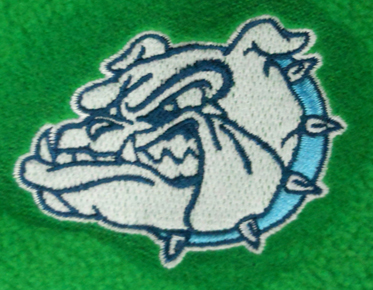How to Digitize & Embroider Custom Designs
There are many limitations in the embroidery process that must be carefully considered during the transition from graphic artwork to stitching. These constraints must be considered especially for items with limited space for embroidery, such as baseball caps. This requires an experienced embroidery digitizer to take these limitations into account when digitizing the logo.
Trouble area
When the digitizer analyzes the artwork to be digitized, he/she is looking for several potential trouble spots:
*Text less than 1/4 inch tall
*Thin lines and fine details
*The area containing the color gradient
*Overall image size
*fabric
Text less than 1/4 inch tall
If you want your embroidered logo to stitch well on a variety of fabrics, you should never try to pierce the text any smaller than 1/4 inch. Following this rule will ensure your logo can be sewn onto anything from pique to wool. On the other hand, making a logo with text so small that it is almost impossible to sew on a nylon jacket is sure to be a disappointment when sewed on wool or pique.
If you limit your clothing choices to easy-to-sew nylon or similar fabrics, you can create smaller text. Another trick that can sometimes help with small text is to stitch the text with thinner threads. The downside of this method is that there will be more breaks in the production process and your color choices are very limited. In addition, the use of finer threads can greatly increase the number of design stitches resulting in expensive applications. The best way to do this is to slightly enlarge the text so that it fits within the 1/4 inch rule. In general, small text is usually not a problem as embroidery is designed to be seen at a distance and text smaller than 1/4 inch is not easily seen from a distance.
Thin lines and fine details
Thin lines and details can also be an issue, as you need to reproduce a thin solid thread with a series of very thin solid stitches. A very common problem arises when the logo consists of very thin lines of light colors such as white or yellow. If you try to reproduce these sections in a light colored thread with a walking stitch, you will get a "dotted line effect" each time the stitches enter and exit the fabric. Therefore, fine details need to be reproduced using darker colored lines.
The area containing the color gradient
Color gradients are easy to create in the printing process, but embroidery uses different colors, which makes it a challenge to replicate shades and gradients. If the gradient is not a prominent part of the artwork, it can be omitted and the embroidery will be used as a substitute. In some cases, two or more thread colors can be used to roughly reproduce gradient areas.
Overall image size
Consider converting the following artwork
to embroidery:
This original image is about 1" wide and 1/2" high. This logo needs to be enlarged to about 3 inches wide to produce a properly sized embroidered logo. You'll notice that most of the fine detail is lost when zooming in to this size. Note that the letter C has two different styles near the head and tail regions. With this artwork, the digitizer will leave guesswork and fill in the gaps in these fields. It is important to provide the digitizer with the largest and highest quality artwork you can find. Large graphics can easily be scaled down without losing detail, but this is not the case.
Fabric
Fabric can also affect the look of an embroidered logo. Nylon fabrics are relatively easy to sew because of the uniformity of the woven material. Picks are usually the most challenging, with loose, uneven knits and texture. Generally impractical to digitize different logos for each fabric type. The digitizer will attempt to enhance (or change the scale) areas of the artwork in a way that allows for the difficult to replicate reliably.
Reproducing some graphic logos can be a
challenge, but an experienced digitizer and embroidery shop will be able to
guide you through the tradeoffs needed for best results. Knowing the
limitations of the embroidery process helps to get into the digital process as
this will speed up the design process and guide your expectations.



